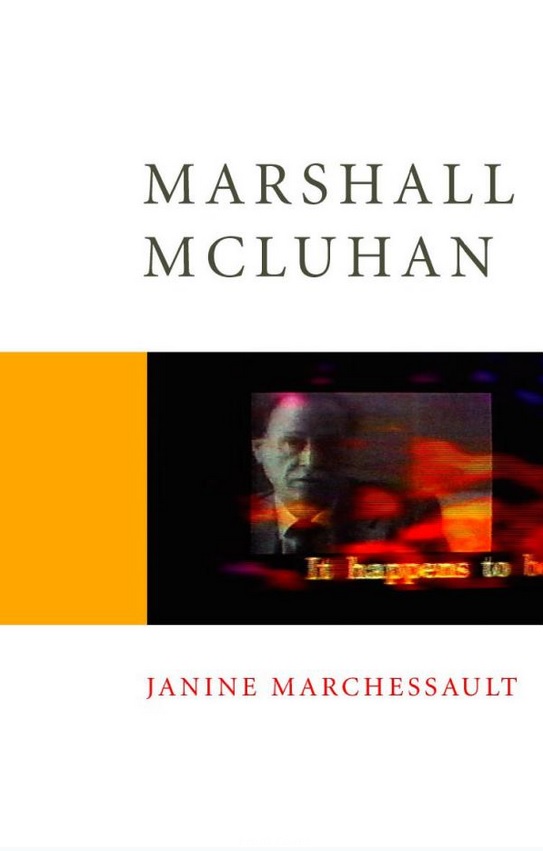 Marshall McLuhan: Cosmic Media
Marshall McLuhan: Cosmic Media
By Janine Marchessault (Sage Publications, 2005)
Marshall McLuhan’s theories of media, art and culture are being reexamined in the context of new digital cultures and globalization. This book provides a close reading of some of his key texts to discern the contribution his thinking can make to our understanding of the present condition of convergent and yet unstable media cultures. Across McLuhan’s wide-ranging writings on the media, the author argues that his central contribution to communication and cultural studies does not consist in any one theoretical insight. Rather, McLuhan’s writings over a 40-year period from the 1940s to his death in 1980 are consistently concerned with understanding the contemporary media as a problem of method.
The key to any analysis of the media, always for McLuhan connected to the spaces and temporalities of the lifeworld, is a reflexive field approach. Oriented around the archival, encyclopedic, and artifactual surfaces but also “haptic harmonies” and ruptures, this method draws out patterns that render ground assumptions and matrices discernible. This was encapsulated in his most famous neologism, “the medium is message” and this is perhaps why McLuhan had a greater influence on artists than on academics.
Cosmic Media sees McLuhan as a creative researcher and an interdisciplinary thinker who is deeply connected to the Romantic tradition. McLuhan does not make art so much as he recognizes the value of art as a means to discern the production of mediated forms of consciousness. We should bear in mind that McLuhan never claimed to be anything more than “a student” immersed in the new interdisciplinary field of Media Studies that his work helped to inaugurate. Illustrated with many examples from the network society, the book will serve as a guide to anyone who wants to know why McLuhan’s work remains vital, particularly in relation to the study of new media and its environment.

